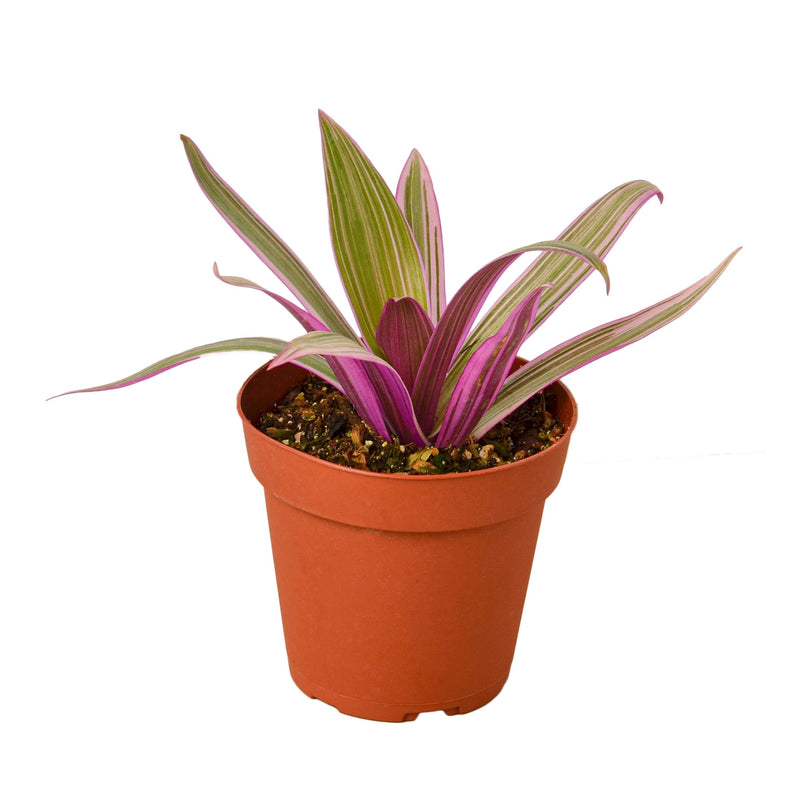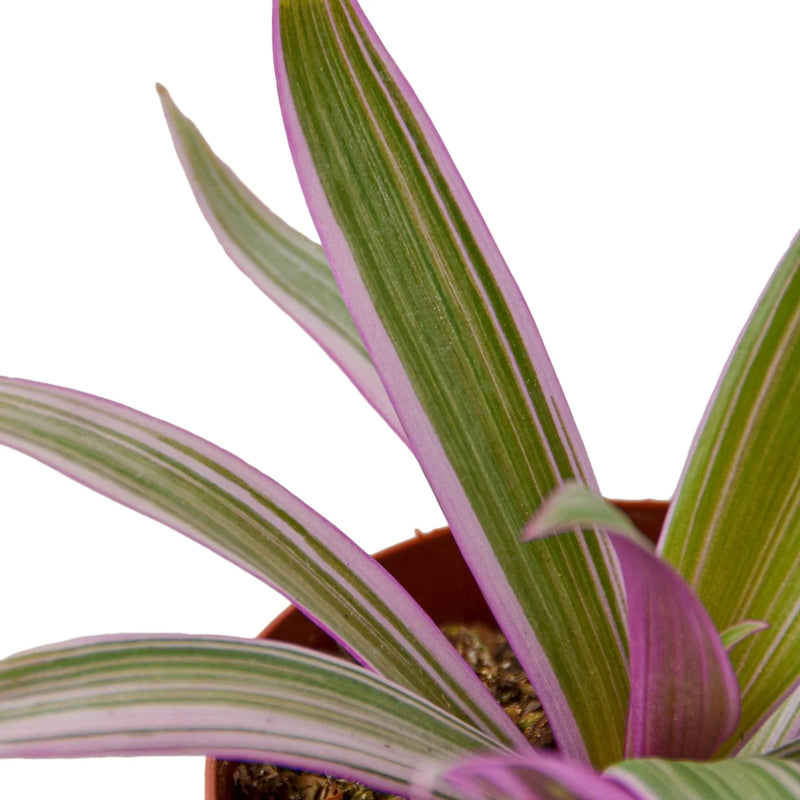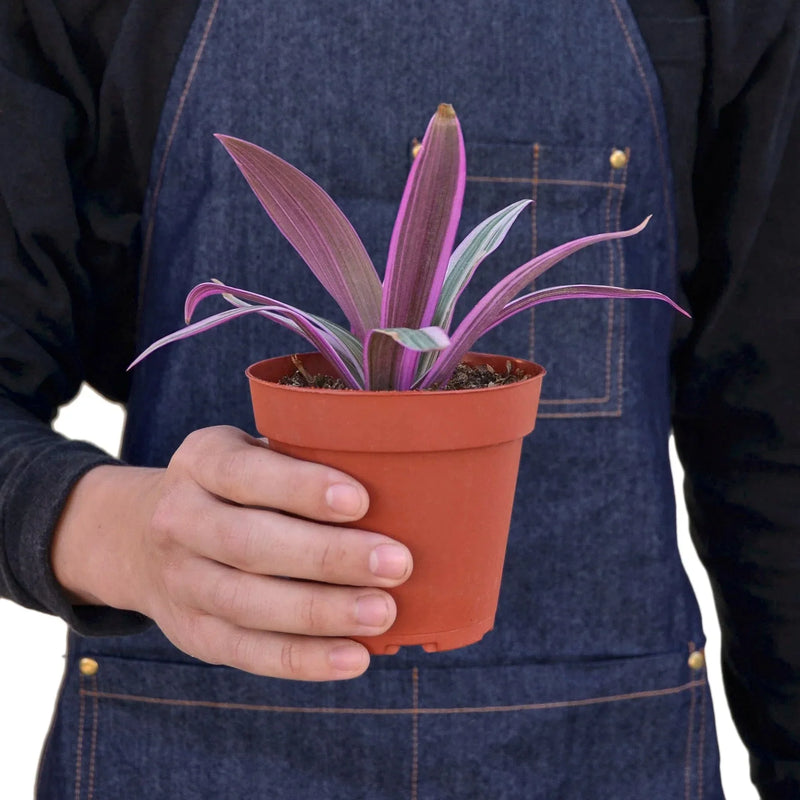Oyster Plant 'Moses in the Cradle'
Couldn't load pickup availability
The Oyster Plant, also known as Moses in the Cradle, is a striking and colorful houseplant officially named Tradescantia spathacea. This plant is valued for its unique boat-shaped bracts that cradle small white flowers, resembling an oyster, and its attractive rosette of lance-shaped leaves that are green on top and rich purple underneath. The 'Moses in the Cradle' is a durable and easy-to-care-for plant that adds a vibrant splash of color to indoor settings.
🌿 Botanical Name: Tradescantia spathacea
💧 Care Level: Easy. It's well-suited for beginners due to its low maintenance needs.
📏 Size: Typically grows to about 6-12 inches (15-30 cm) tall and wide, making it a suitable choice for tabletops, shelves, or as ground cover in outdoor gardens where climate permits.
☀️ Light: Prefers bright, indirect light but can tolerate lower light conditions. However, too little light may cause the leaves to lose some of their vibrant colors. Avoid direct sunlight, which can scorch the leaves.
💧 Water: Water when the top inch of soil becomes dry to the touch. It's important not to overwater, as this can lead to root rot. Ensure the pot has good drainage.
💦 Humidity: Average room humidity is sufficient for this plant. It does not require any special humidity adjustments.
🌡️ Temperature: Thrives in temperatures between 60°F to 80°F (16°C to 27°C). Protect it from temperatures below 50°F (10°C), as it is not frost-tolerant.
🌱 Soil: Use a well-draining potting mix. A standard potting soil mixed with perlite or sand can improve drainage, which is beneficial for its health.
🌱 Fertilizing: Fertilize every month during the growing season (spring and summer) with a balanced, water-soluble fertilizer diluted to half the recommended strength. Reduce feeding in the fall and winter months.
🔄 Pruning: Pruning is not typically necessary but can be done to remove any yellow or damaged leaves and to encourage bushier growth. Regularly trimming can help maintain its shape and size.
🍃 Pests and Diseases: Watch out for common pests such as spider mites, aphids, and mealybugs. Overwatering can lead to root rot, so be cautious with your watering schedule.
Propagation: Easily propagated by stem cuttings or division. Simply cut a piece of stem with a few leaves and plant it in moist soil, or divide the plant during repotting. Keep the soil moist until the cuttings are well-rooted.




Oyster Plant 'Moses in the Cradle'



